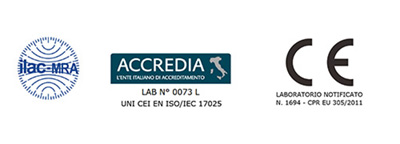 The identification and quantification of the crystalline phases present in a sample is a useful tool in the characterization of crystalline and semi-crystalline materials like refractories, ceramics and raw materials, and in the identification of heterogeneities, inclusions and other crystalline defects that can be found in glass products.
The identification and quantification of the crystalline phases present in a sample is a useful tool in the characterization of crystalline and semi-crystalline materials like refractories, ceramics and raw materials, and in the identification of heterogeneities, inclusions and other crystalline defects that can be found in glass products.
The mineralogical analysis by diffraction can be performed in a qualitative way, consisting only of the identification of the crystalline phases, or in a quantitative one, which in addition includes also a quantification of the weight percentage abundance of the recognized phases.
Through the qualitative XRD analysis it is possible to identify the crystalline phases present in the sample on the basis of the comparison between the experimentally acquired diffractogram and the standard reference patterns (ICSD/ICDD/JCPDS archives).
From this analysis, in addition to identifying the crystalline phases present in the sample, it is also possible to obtain a quantification of their relative abundances (%weight). The analytical method is based on the Rietveld Refinement approach, that involves a least squares best fit between the experimentally acquired diffractogram and the crystallographic models of the phases identified as present in the sample; from the parameters of this best fit it is in fact possible to calculate the mineralogical composition of the analysed material.
To determine the abundance of glassy phase within a sample of ceramic or refractory material, the method of the internal standard is used: a known quantity of a crystalline phase that is certainly not present in the sample is added to the sample, and a quantitative XRD analysis is carried out. On the basis of the degree of overestimation of the percentage abundance of the internal standard in the sample+standard mix, it is possible to calculate the percentage of amorphous phase present in the original sample.
The presence of respirable particles of free crystalline silica in the workplace environment is a potential problem for the health of workers; dedicated stationary and personal samplings (see also the Workplace analysis service) allow to trap representative amounts of respirable particulate matter on special filters, which are then analyzed in laboratory via XRD. The acquired diffractograms are compared to a special calibration curve, created using known quantities of quartz (NIST standards) according to the external standard method, and the obtained results are then elaborated to yield airborne respirable crystalline silica concentrations.

